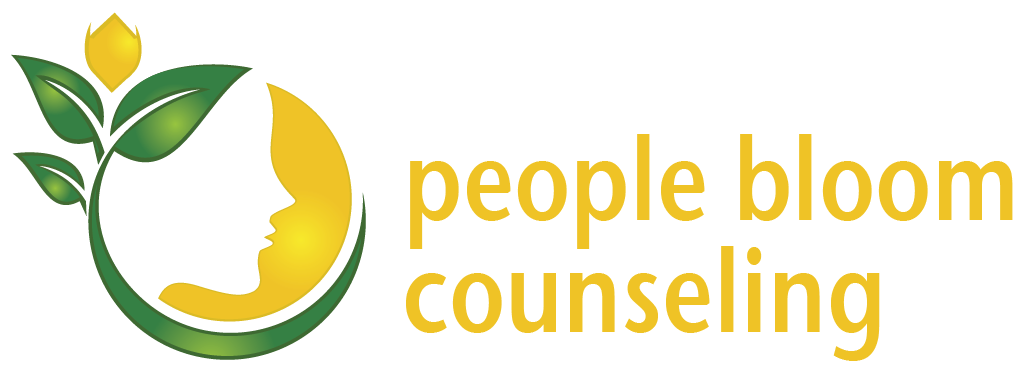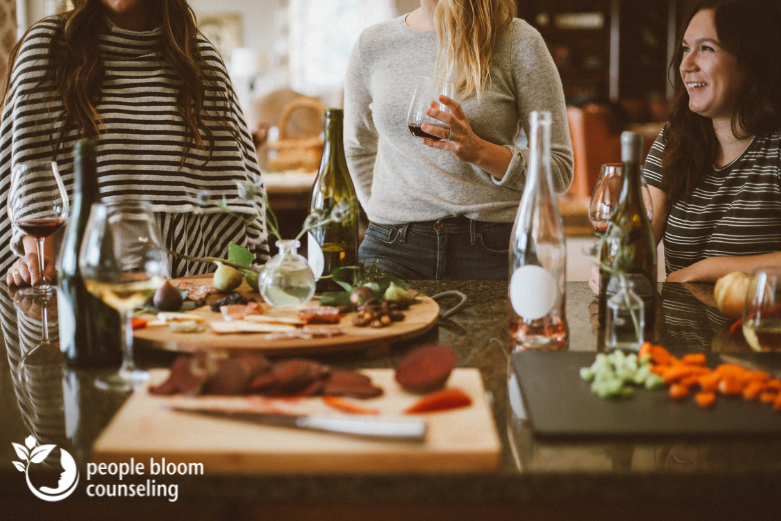Photo by Kelsey Chance on Unsplash
Whether you’ve hunkered down and avoided gatherings all year, or you’ve seen some people in person, we’ve all been affected by the pandemic. While I hope you didn’t lose a loved one, you probably lost your routine and sense of normalcy. Businesses closed, restrictions were imposed, workplaces shifted their policies. We can’t deny it had an impact on our lives and livelihoods. Our collective psyche has been especially affected by social distancing restrictions, and it’s possible that many of us have forgotten how to “people.”
If you’ve been anxious about having to socialize again, you're not alone. The term that’s going around is “FOGO,” or fear of going out. Being this out of practice at socializing can make even the biggest extrovert feel a bit self-conscious. If you were already prone to social anxiety pre-pandemic, those fears will likely be heightened as you see people again.
Who would have thought two years ago that something as simple as...being out in public could become so anxiety inducing, even for people without agoraphobia?
If you’re bracing yourself to face the world again...here’s what you should know:
You’re going to act weird (and that’s ok)
All of my friends and family are now doubly vaccinated, so I feel more comfortable gathering indoors, sans mask, for the first time in more than a year. A small group of gals decided we’re all ready to get together at Laura’s house for brunch/clothing exchange, something we used to do regularly BC (Before Covid).
As I pulled up to Laura’s house, excitement flooded over me. It’s really happening! I felt like a teenager who was finally allowed to go out with friends past 8 pm!
It was great to see everyone! But there were moments when I didn’t know what to do with my hands when I talked, when I excitedly over-shared every detail of my life, and yet simultaneously had no idea what to say. I was over-eager and probably overwhelming everyone around me. And yes, this is part of my personality normally too, but the awkwardness just got exaggerated tenfold!
The good news is that it seemed like I wasn’t alone. The other girls also had moments when they seemed a bit off - like gawky teen versions of themselves. It was endearing and sweet, and I felt less alone. It will take some getting used to, but you’ll catch up to your level of comfort with people again.
You’ll appreciate your friends on a whole new level
All your gatherings for the next few months will probably feel like joyous reunions. When we gathered at Laura’s, I just wanted to hug everyone! I’m normally not that social of a person. But hanging out with friends indoors after 1.5 years of isolation, it was like I just got out of the brig! I told every one of them what I appreciated about them. I told them how great they are, how nice it was to see them. It’s not often I let myself be vulnerable enough to show sincere, earnest love and affection, so this was a new side of myself. And I’m not mad about it!
If appreciating your friends more and showing it is a result of this pandemic, then one small thing came of it that isn’t bad news. Acknowledging your people makes them feel good - so go ahead and share how you feel. What’s there to lose at this point when we’ve already lost so much? Let this be one of the small gains from this falafel of a year!
You might even appreciate people you don’t like
My uncle came through town on his annual drive West a few weeks ago. Uncle Gary is a classic cowboy bachelor. He and I disagree on pretty much everything under the sun. But at the same time, he’s the friendliest man you’ll ever meet. It’s very strange to hold these two truths at once.
Gary just so happened to have a friend who had a life threatening case of COVID, so Gary surprisingly opted to get vaccinated. We all gathered at my parents’ house for supper. Normally I’d have some reservations about seeing him - constantly anticipating the next racist thing he says - how will I handle it? Will my family’s heads explode at the wild conspiracy theories he spouts?
But as it turned out, it was so nice to see him and catch up with a relative from my childhood, that I enjoyed spending time with him. That’s how deprived I’ve been of socializing! We all shared a meal and caught up (soo much to catch up on). Enjoying the company didn’t excuse the racist comments, and I tried to listen without judgement and then calmly voice my disagreement. You could almost call it a discussion. It was an exercise in speaking out, holding boundaries, but also appreciating the presence of this fellow human and family member. Isn’t this type of social engagement the goal between people who differ?
I attribute my willingness to enjoy this quality time to the pandemic. After so long being forced to be apart, it was comforting, sweet and generally a positive experience to sit around playing cards with family like old times. Nothing like a pandemic to make you embrace the other side.
You may be surprised at how you feel around the company of others who differ from you these days. We are so divided lately; sharing a meal, truly “breaking bread,” and opening up a conversation can do wonders to bring people together.
Get ready for a flood of conflicting emotions
While you will be relieved to see everyone in such a carefree way, worry will still seep in occasionally. The worry has been ingrained in us for more than a year. News outlets, government entities, scientists, researchers, and social media have all instilled fear of getting close to others. There’s no way this wouldn’t impact our psyche around other humans. It’s ok if you’re still concerned. There’s so much we don’t know yet.
We are social creatures, so it goes against our nature for humans to be apart. But we live in a culture that values individuality and independence, and we were already isolated enough BC. This pandemic was a nightmare for mental health - but we are slowly seeing the other end.
Coming together again will bring up a mix of relief, anxiety, exhilaration, concern, comfort, joy and maybe anger as you remember how hard people can be to deal with. All of these feelings will be normal in the coming months. Coming back to a sense of normalcy will take a while. But we’re all feeling the weird feelings together.
Talk to someone about how weird it feels
Ready or not, we’ll need to come out of our houses someday and engage with the world, like bears out of hibernation. Most of the people in your life will understand and relate if you express how weird it feels - we all have that in common now. But if the thought of going “back” feels intimidating or nerve wracking, talk to one of our therapists. They’re trained in just this thing. And if you’re not quite comfortable with seeing them in person, our practice is still sticking to telehealth counseling for the time being.
Karen Lenz is the Office Whiz and Insurance Guru at People Bloom Counseling. She writes blog posts as a human navigating this world, a client sitting across from a therapist, much like you. While she enjoys seeing people, she secretly kind of likes the lockdown because it gives her more time for cooking, yoga, gardening, and the perpetual summer project that is fixing up the camper.





















